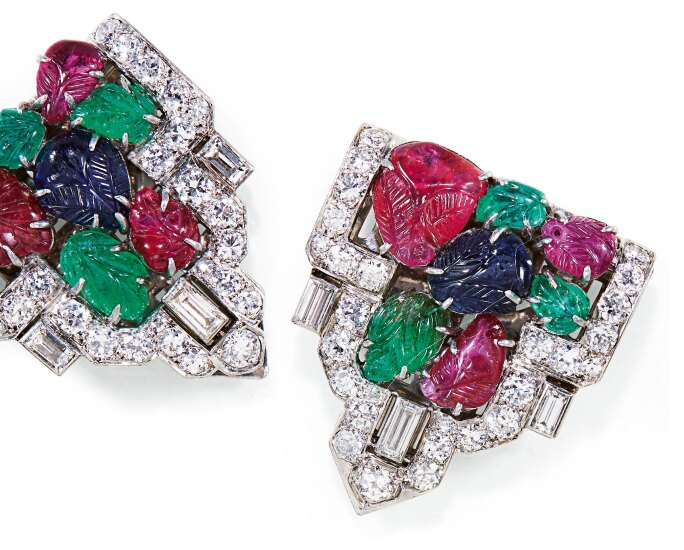Z izi Jeanmaire, born René Macelle, is celebrated for her iconic career in dancing and fashion. In 1949, she played the title role in Bizet's Carmen, created and choreographed by her future husband Roland Petit, which became a worldwide sensation and attracted the attention of Hollywood. In 1954, their dance show took to the town and Petit launched a new genre with La Revue des Ballets de Paris in 1956, followed by La Revue à l’Alambra in 1961. The dance act Mon Truc en Plumes (My Feather Boa) was created with costumes by Yves Saint-Laurent, and Zizi Jeanmaire became an icon of the Music Hall scene.
Ahead of Sotheby's upcoming Paris Jewels sale on 11 October, we take a closer look at one of the jewels from her collection, a spectacular pair of jeweled clips that reveal the taste of the dancer and represent a key piece in the history of Art Deco period jewelry.

Clips
This characteristic jewelry developed in the inter-war period. The Roaring Twenties saw a revolution of woman’s fashion: skirts got shorter, women wore shorter and bobbed hair styles, corsets were swapped for looser, straighter and geometrical shapes.
The clips can be worn on collars or lapels, either one on each side or one on top of the other. An extra pin also enables one to wear the two clips as a brooch.

Geometry
After the “garland” style of La Belle Epoque, with its devant de corsage of floral motifs and arabesques, and the sensual style of Art Nouveau, which took its inspiration from the natural world and used non-precious materials like pâte-de-verre and plique-a-jour, came Art Deco - a style instantly recognisable by its use of geometry. The exchange between circular and baguette-cut diamonds in these clips gives the piece a defined rhythm. The structured shape of the jewel fits well with the fashion of the time.
Carved gemstones
The Great Exhibition of London in 1851 introduced Europeans to Indian jewelry for the first time. After Queen Victoria was proclaimed Empress of India in 1876, Indian jewelry gained popularity and in 1900, Cartier created its first “Indian” ring. In 1911, Jacques Cartier travelled to India where the Indian royals were so seduced by his style and use of platinum, they entrusted their own treasures to French jewelry houses to be restyled according to popular European fashion. Consequently, carved gemstones combined with the geometrical Art Deco style appeared in French jewelry design. This combination of carved gemstones in Cartier jewelry went on to be named “Tutti Frutti".



